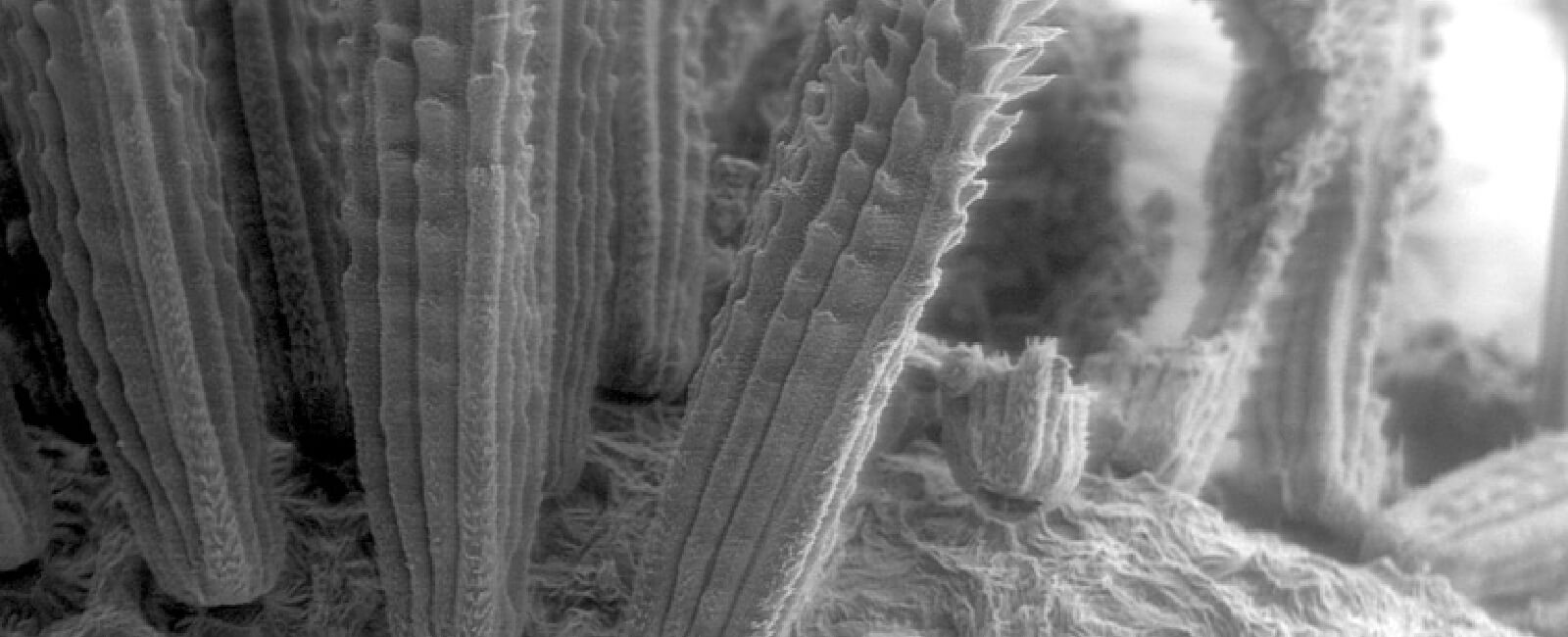2019 M&M Student Scholars
Below are listed M&M Student Scholars funded by MSA.
Fatemeh Abbasi Yeganeh — Florida State University
3-D Structure of Z-disks Isolated from the Flight Muscle of Lethocerus Indicus
Anika Burrell — University of Washington
Cryo-EM Reveals IMP Dehydrogenase I Filaments Adopt Diverse Architectures
Paul Cueva — Cornell University
Sub-nm Resolution, Sub-pm Precision Structure Mapping Robust to Thickness and Tilt Variations by Cepstral Analysis of Scanning Nanodiffraction 4D-STEM
Ha Dang — University of Washington
Cryo-EM structure of Nipah virus fusion glycoprotein in complex with a monoclonal antibody reveals mechanism of neutralization
Julia Doh — Oregon Health & Science University
VIPER: a Genetically-Encoded Tag for Fluorescence and Electron Microscopy
Amanda Erwin — University of Michigan
Structural Analysis of Helicobacter pylori VacA Reveals Insights into Oligomerization
Alice Greenberg — University of Oregon
Lorentz Implementation of STEM Holography
Catherine Groschner — University of California, Berkeley
Machine Learning for High Throughput HRTEM Analysis
Shen Han — Max Planck Institute for Polymer Research
High-Contrast Imaging of Nanodiamonds in Cells by Energy filtered and Correlative Light-Electron Microscopy: Towards a Quantitative Nanoparticle-Cell Analysis
Daniel Kelly — The University of Manchester
Liquid-Phase STEM-EDS in Graphene and Silicon Nitride Cells
Abinash Kumar — North Carolina State University
In Situ Ferroelectric Domain Dynamics Probed with Differential Phase Contrast Imaging
Ethan Lawrence — Arizona State University
Real-Time Imaging of Surface Dynamics on CeO2 Nanoparticles using Time-Resolved Aberration-Corrected TEM
Brandon McKeon — Arizona State University
Characterization of Misfit Dislocations at Heterovalent II-VI/III-V Interfaces
Arthur Moya — Linacre College, University of Oxford
A Semi-quantitative Predictive Model for SnO2 Adatom Diffusion; Its Application to Exit Wave Reconstruction
Akshay Murthy — Northwestern University
Electronic Biasing of Monolayer Transition Metal Dichalcogenides in a TEM
Colum O'Leary — Materials Science, University of Oxford
Electron Ptychography Using Fast Binary 4D STEM Data
Will Parker — University of Oregon
Feasibility of an Electron Orbital Angular Momentum Sorter
Timothy Pegg — Miami University
Immunoprofiling of Cell Wall Carbohydrate Modifications during Aerenchyma Formation in Fabaceae Roots
Graham Rykiel — Oregon Health & Science University
Multiscale Cardiac Imaging: From Whole Heart Images to Cardiac Ultrastructure
Jonathan Schwartz — University of Michigan
Removing Stripes, Scratches, and Curtaining with Non-Recoverable Compressed Sensing
Alexandra Sheader — Materials Science, University of Oxford
Microscopy on Drugs: Characterisation and Quantification of Pt-based Pharmaceuticals using the STEM
Michelle Smeaton — Cornell University
Quantifying Atomic-Scale Quantum Dot Superlattice Behavior Upon; in situ; Heating
Louisa Mezache — The Ohio State University
Indirect CLEM Identifies Proarrhythmic Remodeling of Intercalated Disk Nanodomains in Murine Atria Following Acute VEGF Treatment
Janis Wirth — University of Erlangen-Nuremberg
Correlative 3D Characterization of High Temperature Oxide Scales on Co-Base Superalloys Using Nano-CT and FIB/SEM Tomography
Yao Long Xing — Sungkyunkwan University
In situ Negative Cs HRTEM Imaging of Topotactic Phase Transformation from Perovskite SrFeO3 to Brownmillerite SrFeO2.5
Reed Yalisove — University of Michigan
Defining Theoretical Limits for Aberration-Corrected Electron Tomography: New Limits of Resolution, Object Size, and Dose
Hwanhui Yun — University of Minnesota
Visualization of Misfit Dislocation Network at the BaSnO3-LaAlO3 Interface
Ruopeng Zhang — University of California, Berkeley
Understanding the Slip Planarity and Residual Strain Field in Ti-6Al using Nanobeam Electron Diffraction and First Principles Calculations
Yanyan Zhao — Stanford University
Cryo-EM Study of Chaperonin Mm-Cpn’s Conformational Heterogeneity under Different ATP Conditions
